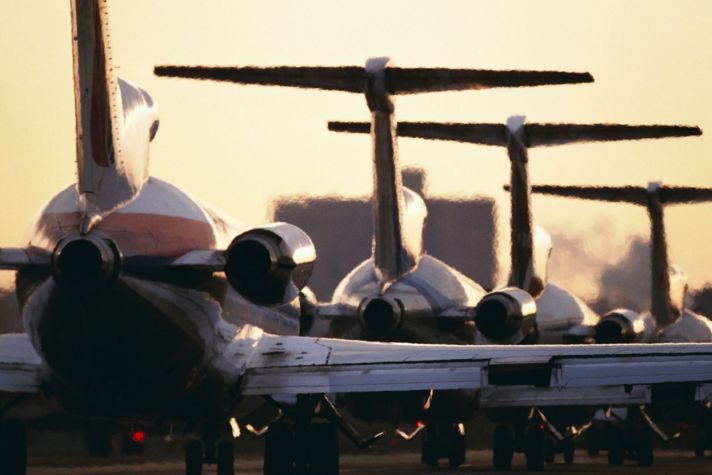-
 Global
Global-
Africa
-
Asia Pacific
-
Europe
-
Latin America
-
Middle East
-
North America
- |
- BUSINESSES
- |
- Contact
- |
-
 Global
Global-
Africa
-
Asia Pacific
-
Europe
-
Latin America
-
Middle East
-
North America
- |
- BUSINESSES
- |
- Contact
- |
You are browsing the product catalog for
- News
- 5 Ways This Cockpit Update Will Change Flight As We Know It
5 Ways This Cockpit Update Will Change Flight As We Know It
In honor of our new avionics system, Honeywell Anthem, we break down why the cockpit is key to innovation in flight.
Have you peeked into the cockpit on an airplane?
A lot happens in there. It’s where pilots not only power, fly and land the aircraft, but it also houses important navigation information and vital data about how the aircraft is working – and parts that may need maintenance.
No matter the size or type of aircraft you’re on, the pilots’ controls may look relatively similar: a dashboard covered in buttons, levers and a mix of analog and digital screens.
The controls you’ve seen in recent years – maybe like the photo above – may not have appeared to vary much, but a major upgrade is on the horizon that’s about to take us to a new era of flight.
Enter Honeywell Anthem, our new avionics system that gives pilots and crews the flight and aircraft data they need for smarter and smoother flights. Plus, it’s able to be used in aircraft beyond commercial and business jets, meaning a future of flying taxis is closer than ever.
Here’s a closer look at how flying with this system is set to change the typical flight experience.
Less time waiting for maintenance
Then: To access and transfer data about the aircraft and its equipment, both mechanics and pilots had to be onboard the aircraft with a wired connection, potentially causing delays in maintenance.
Now: Cloud connected for the first time, the avionics system allows pilots and mechanics to access information about the flight or equipment even if they’re not personally on the aircraft. Before an aircraft lands or takes off – and even if the aircraft is powered off – mechanics and crew can see if there’s an equipment fault and start working on a solution.
Ready for takeoff – faster
Then: For pilots and crew, preparing for a flight could often amount to ample time in the cockpit, where they’d complete pre-takeoff tasks manually before revving up the aircraft.
Now: Once they arrive on the aircraft and power up Anthem, pilots can find their flight plan already pre-loaded, making it faster to get off the ground. Bringing always-on cloud connectivity to the cockpit helps pilots save up to 45 minutes of time before trips by minimizing the pre-flight tasks they have to complete manually.
Smoother flights
Then: A dashboard comprised solely of traditional radar displays and analog navigation tools only gives pilots so many ways to look at – and out – their aircraft when it’s on the ground and in the air.
Now: With digital displays that mimic the quality of a smartphone screen, pilots get a clear view of what’s around and ahead of them. Integrated with tools like 3D maps, the system can also help reduce the potential for ground collisions and other aviation incidents on the runway by 50%. Plus, pilots can customize what’s on their dashboard – whether they rearrange how the tools are ordered or add a third-party app to show what the weather’s like where they’re landing.
Simplified pilot training
Then: Using traditional dashboard displays and complex maps during simulations or flights can be complicated for pilots-in-training.
Soon: Equipped with the clearest symbology yet and track-based Synthetic Vision System (SVS) to give pilots an easy-to-understand view of their flight and route, Honeywell Anthem is designed to help every pilot feel comfortable in the cockpit.
The sky’s the limit
Then: The traditional cockpit is built for commercial aircraft, rotorcraft (like helicopters) and business jets.
Soon: In addition to the above, Honeywell Anthem is also designed to be used in urban air mobility, or UAM, aircraft – which are low-flying electric vehicles designed to transport people across and between metropolitan areas.
The avionics system will be used in Vertical Aerospace’s piloted, zero-emissions electric battery-powered aircraft, and in the Lilium Jet, which holds six passengers and is the world’s first electric jet that takes off and lands vertically.
Copyright © 2024 Honeywell International Inc.




